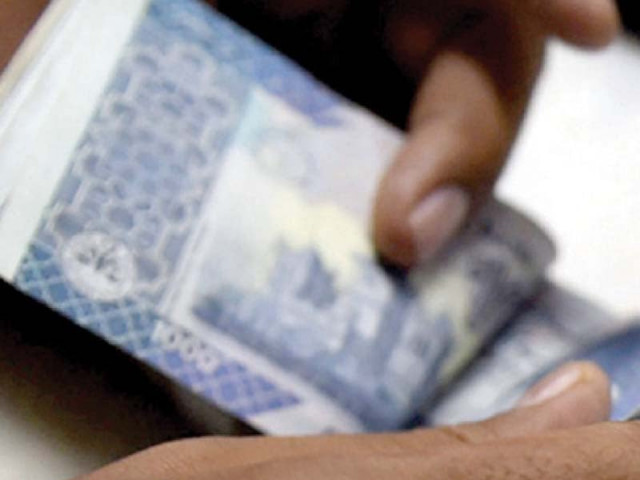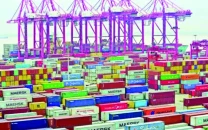Interest rate hits 20-month high
Despite increase, SBP estimates inflation, current account deficit to remain elevated

In line with market expectations, Pakistan’s central bank increased the benchmark interest rate by 100 basis points to 20-month high at 9.75% on Tuesday to decelerate inflation, narrow down current account deficit and achieve sustainable economic growth of close to 5% in fiscal year 2021-22.
Despite monetary tightening, the State Bank of Pakistan (SBP) estimates that the inflation reading and current account deficit would remain high in the current fiscal year compared to its previous projections.
Accordingly, it revised up its estimates for inflation to 9-11% for full fiscal year compared to earlier projection of 7-9%. It also revised up the estimate for the current account deficit to 4% of GDP (gross domestic product) for the fiscal year against 2-3% of GDP anticipated earlier.
“The MPC (monetary policy committee) noted that the current account deficit is expected to be fully financed from external inflows,” read SBP’s latest monetary policy statement. “As a result, foreign exchange reserves should remain at adequate levels for rest of the fiscal year and resume their growth trajectory as global commodity prices ease and import demand moderates.”
The central bank said that significant jump in yields (rate of return) of government debt securities of all tenors like Treasury Bills (T-bills) and Pakistan Investment Bonds (PIBs) in the secondary market and auctions were unjustified.
“The MPC noted that this increase appeared unwarranted,” according to the statement. Bond yields are a powerful measure to predict the benchmark interest rate in near future. Besides, T-bills and PIBs are the two major sources of government’s budgetary borrowing from the commercial banks. Unjustified surge increases cost of borrowing as well.
“Following Tuesday’s interest rate increase and given the current outlook for the economy and in particular for inflation and the current account, the MPC felt that the end goal of mildly positive real interest rates on forward-looking basis was now close to being achieved,” the statement said. “Looking ahead, the MPC expects monetary policy settings to remain broadly unchanged in the near term.”
Economic growth
High-frequency indicators of domestic demand, released since the last meeting (November 19), suggest that the economic growth remains robust.
The parameters included electricity generation, cement dispatches, sales of fast-moving consumer goods and petroleum products and persistent uptrend in imports and tax revenues.
The outlook for agriculture continues to be strong, supported by better seed availability and an expected increase in area under wheat cultivation. Meanwhile, robust growth in sales tax on services also suggests that the tertiary (services) sector is recovering well.
While some activity indicators are moderating on a sequential basis, partly as a result of recent policy actions to restrain domestic demand, “growth in this fiscal year is expected to be close to the upper-end of the forecast range of 4-5%. This projection factors in the expected impact of Tuesday’s interest rate decision”.
Inflation
Inflation pressure continued since the last MPC meeting as reflected by a significant surge in both headline and core inflation in November.
The rise in inflation has been broad-based with huge contribution coming from electricity charges, motor fuel, house rent, milk and vegetable ghee.
On a sequential basis, inflation rose 3% (month-on-month) to a 21-month high at 11.5% in November.
Looking ahead, based on this momentum and the expected path of energy tariffs, “inflation is likely to remain within the revised forecast range (9-11%) for the remaining of fiscal year 2021-22”.
Subsequently, as global commodity prices retrench, administered price increases dissipate and the impact of demand-moderating policies materialises, inflation is expected to decline to the medium-term target range of 5-7% during fiscal year 2022-23, the SBP said.
Current account deficit
Despite strong exports and remittances, the current account deficit has increased sharply this year due to a rise in imports - beyond expectations.
Inward shipments rose to $32.9 billion during July-November 2021 compared to $19.5 billion during the same period of previous year.
“Around 70% of the increase in imports stems from the sharp rise in global commodity prices while the rest is attributable to strong domestic demand.”
While in the near-term, monthly current account and trade deficit figures are likely to remain high, “they are expected to gradually moderate in the second-half (Jan-Jun) of fiscal year 2021-22 as global prices normalise.
Published in The Express Tribune, December 15th, 2021.
Like Business on Facebook, follow @TribuneBiz on Twitter to stay informed and join in the conversation.









1733130350-0/Untitled-design-(76)1733130350-0-208x130.webp)









COMMENTS
Comments are moderated and generally will be posted if they are on-topic and not abusive.
For more information, please see our Comments FAQ